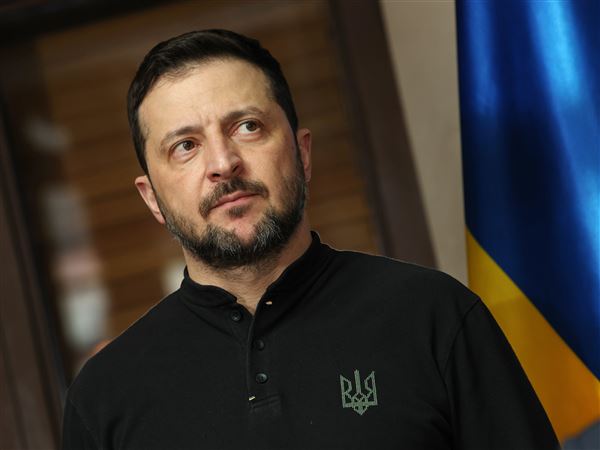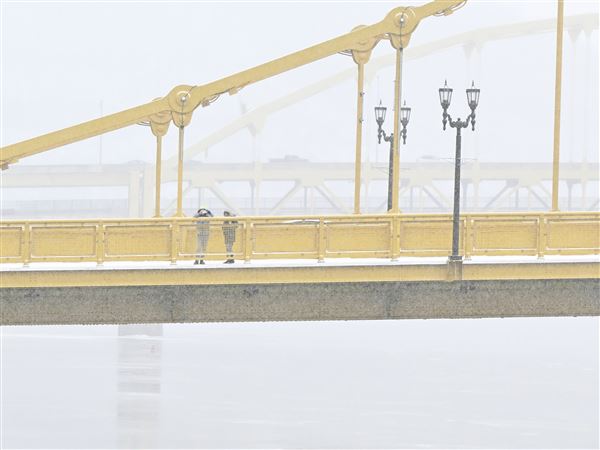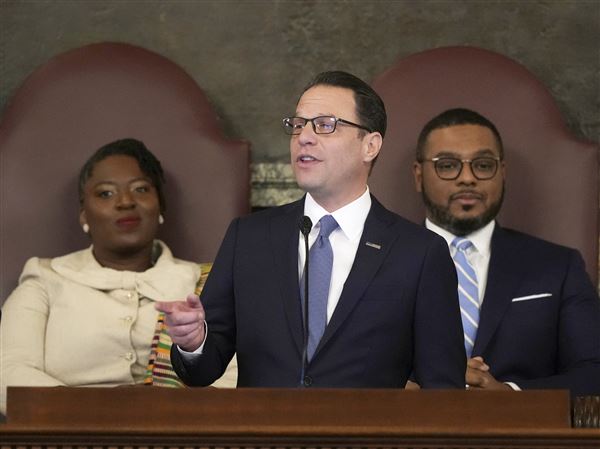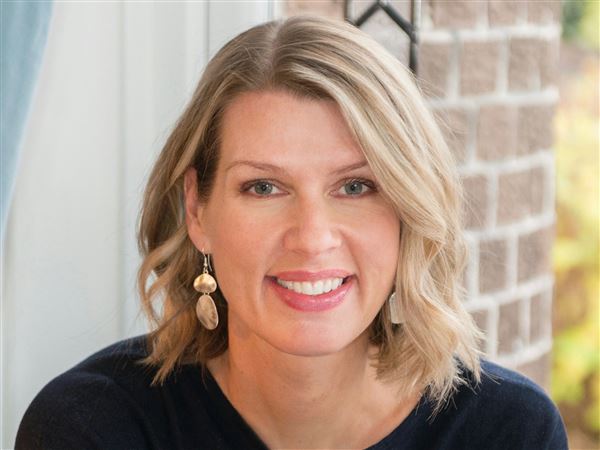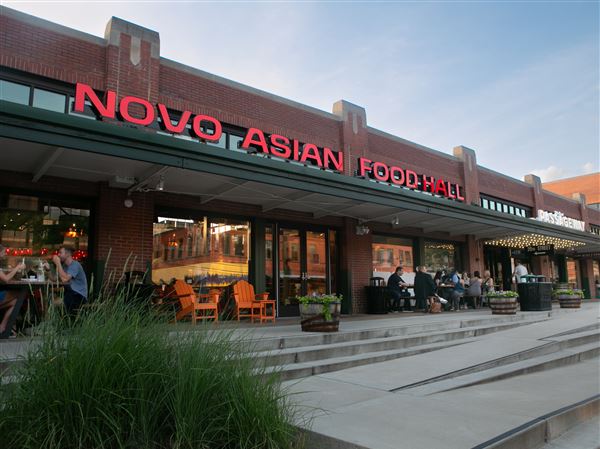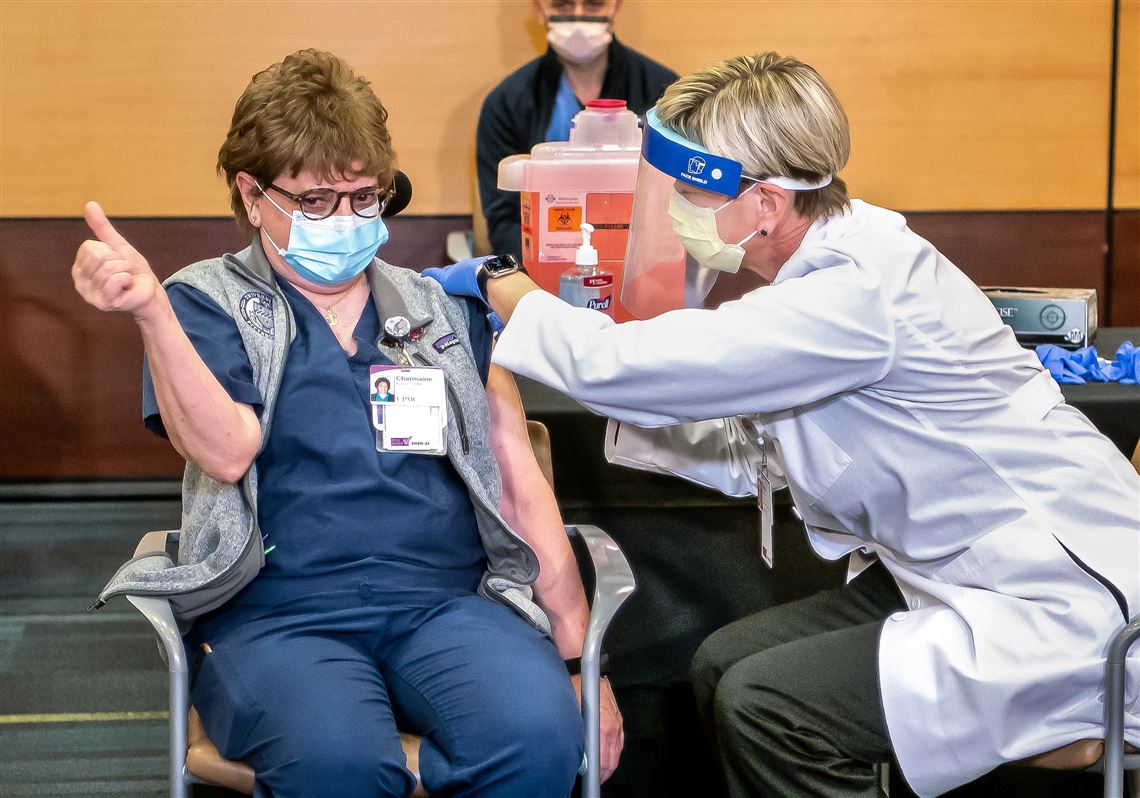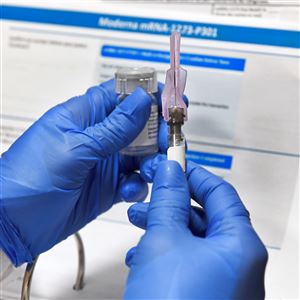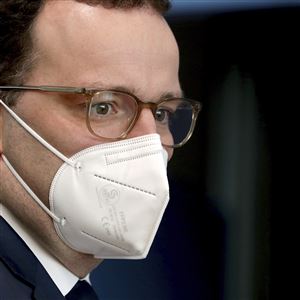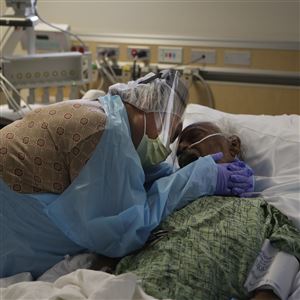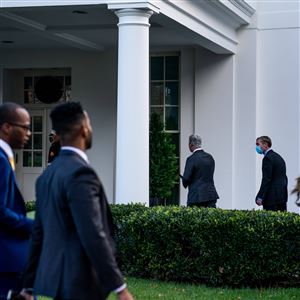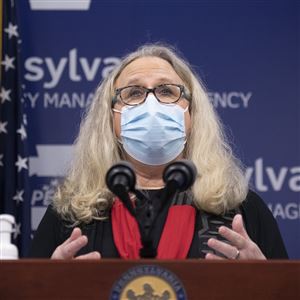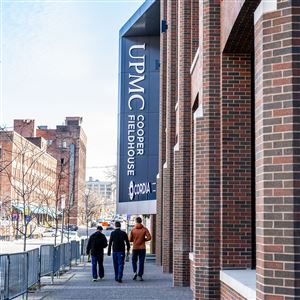An acute care nurse practitioner in a surgical intensive care unit at UPMC Presbyterian Hospital was the first in Pittsburgh to get the new COVID-19 vaccine Monday. Charmaine Pykosh, 67, who has more than 30 years’ experience, said everyone in her unit wanted to get the shot first, but she was chosen after a vote by text.
“I couldn’t sleep,” she said. “My heart was pounding.”
The first shipment of the Pfizer-BioNTech vaccine arrived about 9 a.m. Monday at UPMC Children’s Hospital of Pittsburgh in a UPS van, after which it had to be defrosted.
UPMC Chief Quality Officer Tami Minnier administered the shot to Ms. Pykosh in her upper arm, calling the event a “momentous occasion.”
“It’s a huge honor to be part of this process this morning,” said Ms. Minnier, who inoculated four other front-line health care workers at the Lawrenceville hospital at an event that was livestreamed.
UPMC received 975 doses of the vaccine Monday — a fraction of what’s needed for the hospital system’s 90,000 employees, said Graham Snyder, medical director of infection prevention and hospital epidemiology for UPMC. The hospital system has not received word on when other shipments will arrive.
An Allegheny Health Network spokesman said the 13-hospital system had not yet received the vaccine. However, Monongahela Valley Hospital in Washington County also received a vaccine shipment.
The highly anticipated vaccine started to ship within 24 hours of the U.S. Food and Drug Administration’s approval, going to airports for flights around the country.
At Children’s, a brown UPS van, met by media cameras, pulled into the delivery dock with its valuable cargo and workers unloaded the vials. Front-line health care workers began receiving the shots at 11 a.m.
Packed in dry ice to stay at ultra-frozen temperatures, the first of nearly 3 million doses are being shipped in staggered batches this week, making their way by truck and by plane around the country from Pfizer’s Kalamazoo, Mich., factory. The first shipments started going out Sunday. Once they arrive at distribution centers, each state directs where the doses go next.
Some hospitals across the country spent the weekend tracking their packages, refreshing FedEx’s and UPS’s websites for clues.
The highly contagious coronavirus has killed more people in the United States than in any other country, infecting millions — and killing more than 300,000 Americans — and has hit the economy hard with thousands left jobless.
Another 3 million doses of the vaccine are scheduled to be sent in 21 days for people to receive the booster shot, said Alex Azar, secretary of the U.S. Department of Health and Human Services.
Sandra Lindsay, a critical care nurse at Long Island Jewish Medical Center in New York City, is believed to be the first American to receive the vaccine outside of a clinical trial — a sign of hope that the end is in sight for a pandemic that has ravaged the country since early 2020.
“There’s light at the end of the tunnel,” Ms. Lindsay said. “But we still need to wear masks and social distance.”
The Pfizer vaccine was found to be 95% effective while being “subjected to transparent standards” by a variety of health experts and independent government panels, Mr. Azar said.
Just half of Americans say they want to get vaccinated, while about a quarter don’t and the rest are unsure, according to a recent poll by The Associated Press-NORC Center for Public Health Research.
The FDA, considered the world’s most strict medical regulator, said the Pfizer-BioNTech vaccine appears safe and strongly protective — and laid out the data behind it in a daylong public meeting last week for scientists and consumers alike to see.
“Please, people, when you look back in a year and you say to yourself, ‘Did I do the right thing?’ I hope you’ll be able to say, ‘Yes, because I looked at the evidence,’ ” Dr. Francis Collins, director of the National Institutes of Health, said Sunday on NBC’s Meet the Press. “People are dying right now. How could you possibly say, ‘Let’s wait and see?’ ”
Also, Robert Redfield, director of the Centers for Disease Control and Prevention, said no American will pay out of pocket for the vaccine.
Vaccine development has been on an accelerated schedule, although it could be months before most Americans can receive shots. Front-line medical workers and nursing home residents are considered the first priority.
The Pfizer vaccine, developed in partnership with German drugmaker BioNTech, is the first authorized for emergency use by the FDA, beginning what will become the largest vaccination campaign in U.S. history. Several other countries also have approved the vaccine, including the U.K., which started vaccinating last week, and Canada, which started Monday as well.
Later this week, the FDA will decide whether to greenlight the world’s second rigorously studied COVID-19 vaccine, made by Moderna. Many other vaccines are also in the pipeline.
Mr. Azar told reporters Monday the country was on track to have enough vaccine to immunize anyone in the U.S. who wants it by the end of June 2021. That includes another 100 million doses of a Moderna vaccine to be delivered next spring.
“As it is available, it is allocated to the states, the states tell us what locations they want it, at what qualities, and we package and deliver,” said Gen. Gustave F. Perna, who serves as the chief operating officer of Operation Warp Speed, the federal vaccine effort. “It is a constant flow of available vaccine.”
The U.S. is pushing to procure more doses of the Pfizer vaccine in the second quarter of 2021, after having passed on the opportunity to secure 100 million doses. But no agreement has yet been signed, Pfizer CEO Albert Bourla said Monday on CNN.
When the Moderna vaccine is approved, the federal government is ready to ship nearly 6 million doses to 3,285 locations nationwide. “It will be a very similar cadence that was executed this week,” Gen. Perna said.
For health care workers who, along with nursing home residents, are first in line for vaccination, hope is tempered by grief and the sheer exhaustion of months spent battling a coronavirus that still is surging in the U.S. and around the world.
“This is mile 24 of a marathon. People are fatigued. But we also recognize that this end is in sight,” said Dr. Chris Dale of Swedish Health Services in Seattle.
Updated at 3:33 p.m. Dec. 14 to correct the hospital affiliation of Charmaine Pykosh.
Post-Gazette staff writer Daniel Moore, The Associated Press and Washington Post contributed.
First Published: December 14, 2020, 2:38 p.m.
Updated: December 14, 2020, 5:05 p.m.

